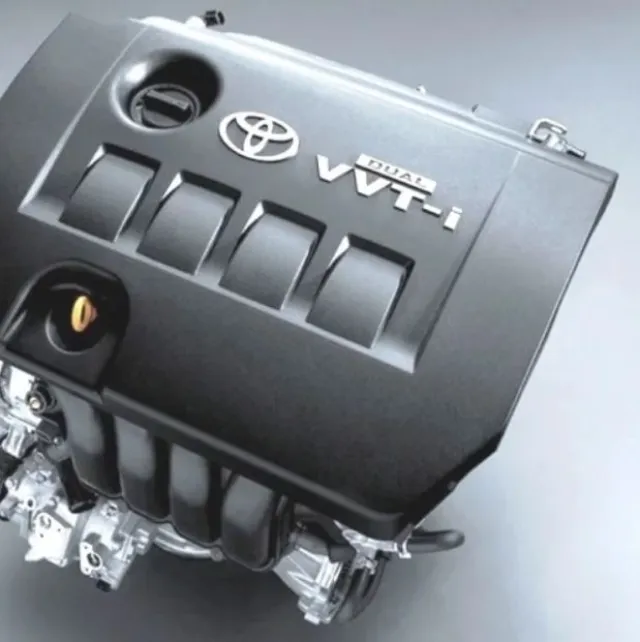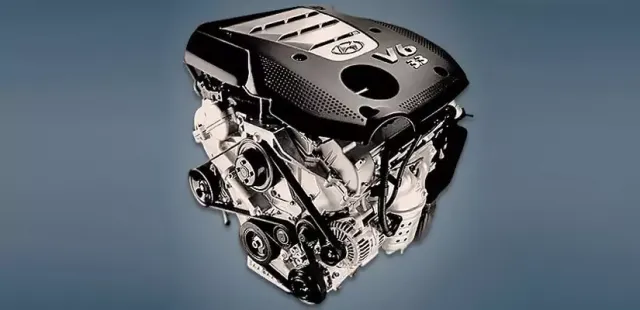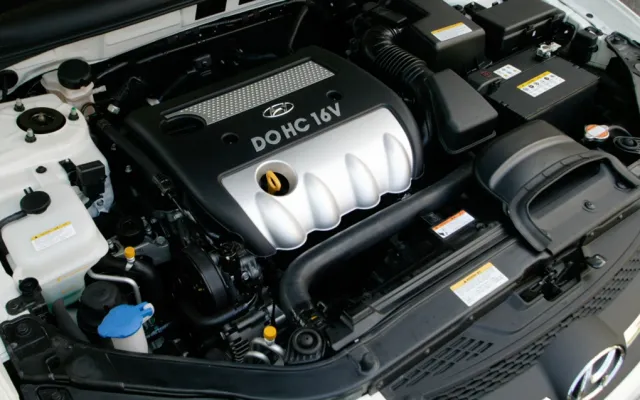
Control Arm
March 6, 2025
Sparkling Citrus Fizz
March 7, 2025G6DB
$ 2.700
the second generation of V6 or Lambda II engines appeared on the restyled Sonata. These power units were distinguished by the presence of CVVT phase regulators already on all camshafts, as well as a plastic intake manifold with a three-stage geometry change system.
The 3.3-liter gasoline V6 engine Hyundai G6DB was produced by the company from 2004 to 2011 and was installed on both front-wheel drive models such as the Santa Fe and the rear-wheel drive Sorento. There were two generations of such a power unit with quite significant differences.
In 2004, the 3.3-liter V6 unit of the Lambda I series debuted on the fifth generation of the Sonata. This is a typical V-engine with an aluminum block and a 60° cylinder angle, multipoint fuel injection, a pair of DOHC cylinder heads without hydraulic lifters, a timing chain and an aluminum intake manifold with two-stage VIS geometry change system. The first generation of the engine was equipped with CVVT phase shifters only on the intake camshafts.
In 2008, the second generation of V6 or Lambda II engines appeared on the restyled Sonata. These power units were distinguished by the presence of CVVT phase regulators already on all camshafts, as well as a plastic intake manifold with a three-stage geometry change system.
Lambda 3.3L family: G6DB, G6DF, G6DH, G6DM, G6DP.
The engine was installed on:
- Hyundai Grandeur 4 (TG) in 2005 – 2011;
- Hyundai Santa Fe 2 (CM) in 2005 – 2009;
- Hyundai Sonata 5 (NF) in 2004 – 2010;
- Kia Opirus 1 (GH) in 2006 – 2011;
- Kia Sorento 1 (BL) in 2006 – 2009.
| Approval | ACEA A3/B4, ACEA C3 |
|---|---|
| Specification | ACEA A1 |
You may also like…
-
Control Arm
$ 200The Control Arm is a crucial component of a vehicle’s suspension system, connecting the wheel hub and steering knuckle to the vehicle’s frame. It allows for smooth vertical movement of the wheels while maintaining proper alignment and handling. Control arms are equipped with bushings and ball joints to absorb shocks and ensure stability during driving.
and steering knuckle to the vehicle’s frame. It allows for smooth vertical movement of the wheels while maintaining proper alignment and handling. Control arms are equipped with bushings and ball joints to absorb shocks and ensure stability during driving.and steering knuckle to the vehicle’s frame. It allows for smooth vertical movement of the wheels while maintaining proper alignment and handling. Control arms are equipped with bushings and ball joints to absorb shocks and ensure stability during driving.
Related products
-
Break Backbone
$ 8.900Important things to mention
and steering knuckle to the vehicle’s frame. It allows for smooth vertical movement of the wheels while maintaining proper alignment and handling. Control arms are equipped with bushings and ball joints to absorb shocks and ensure stability during driving.and steering knuckle to the vehicle’s frame. It allows for smooth vertical movement of the wheels while maintaining proper alignment and handling. Control arms are equipped with bushings and ball joints to absorb shocks and ensure stability during driving.
-
D4EA
$ 1.200The 2.7-liter V6 Hyundai G6BA engine was assembled at an enterprise in Korea from 1999 to 2012 and was installed on top versions of such popular models as Sonata, Magentis, Santa Fe, Tucson. There was a gas modification of this power unit under its own index L6BA.
In 1999, Hyundai introduced its own V6 unit to replace the G6AV engine, which was essentially a clone of the 24-valve version of the 2.5-liter Mitsubishi 6G73 engine. Of the differences here is an aluminum cylinder block with a closed cooling jacket, as well as a different timing belt: the belt rotates the intake camshafts, and the exhaust camshafts are connected to them by a chain.
Otherwise, it is the same V-shaped 6-cylinder unit with a 60° camber angle, a pair of aluminum DOHC heads with hydraulic lifters, a modern ignition system and an intake manifold, which received a proprietary VIS-type geometry change system.
The Delta family also includes engines: G6BP and G6BV.
The engine was installed on:
- Hyundai Coupe 2 (GK) in 2001 – 2008;
- Hyundai Sonata 4 (EF) in 2001 – 2012;
- Hyundai Santa Fe 1 (SM) in 2000 – 2012;
- Hyundai Tucson 1 (JM) in 2004 – 2009;
- Hyundai Trajet 1 (FO) in 1999 – 2008;
- Kia Magentis 1 (GD) in 2001 – 2006; Magentis 2 (MG) in 2005 – 2006;
- Kia Opirus 1 (GH) in 2003 – 2006;
- Kia Sportage 2 (KM) in 2004 – 2010.
-
G4KD
$ 3.800The 2.0-liter Hyundai G4KD engine was produced in the USA and South Korea from 2008 to 2014 and was installed on many of the company’s popular models until it gave way to the similar G4NA. Now this motor is assembled at the Hyundai Wia plant in Shandong province for the local market.
In 2008, the Hyundai-Kia concern introduced an updated line of Theta II power units, which included two naturally aspirated engines with distributed injection of 2.0 and 2.4 liters. They were distinguished from the predecessors of the Theta family by the presence of phase shifters on both shafts, as well as a new intake manifold equipped with a proprietary VIS geometry change system. In all other respects, these are the same engines with an aluminum cylinder block, cast-iron liners, an aluminum 16-valve block head without hydraulic lifters and a timing chain drive.
In some markets, a modification of this engine with a single phase regulator was installed, especially often such a unit is found on Kia Forte sedans from South Korea.:











1 review for G6DB
There are no reviews yet.